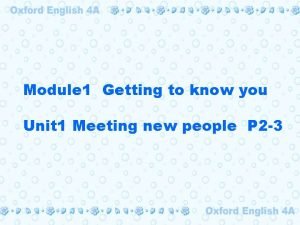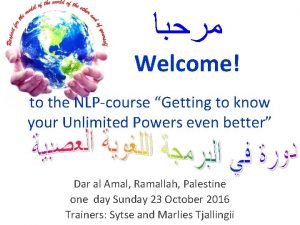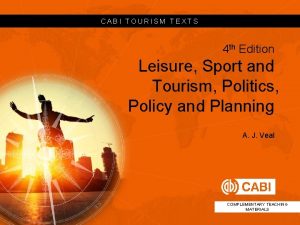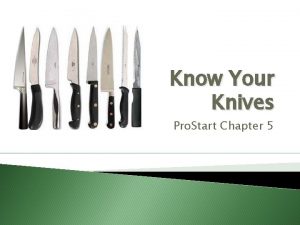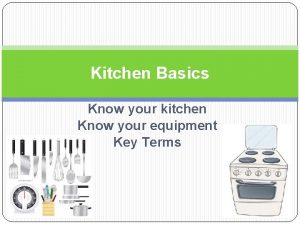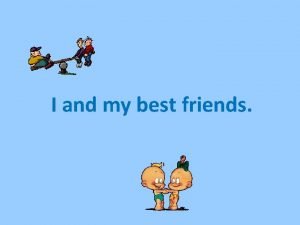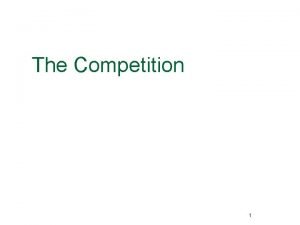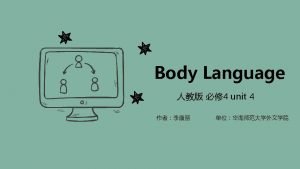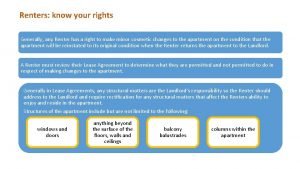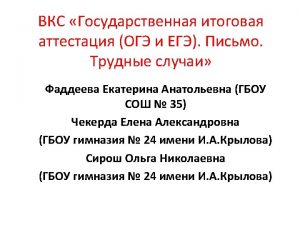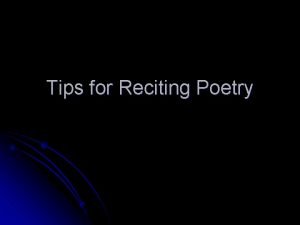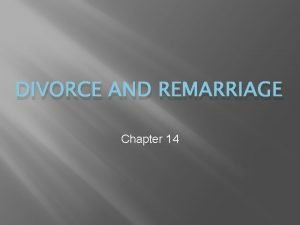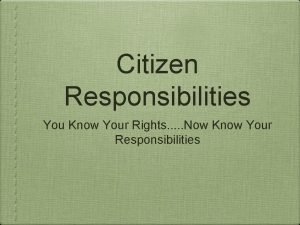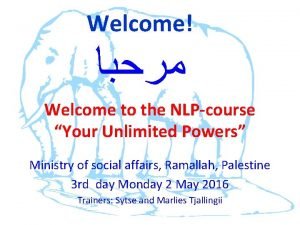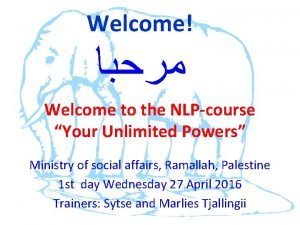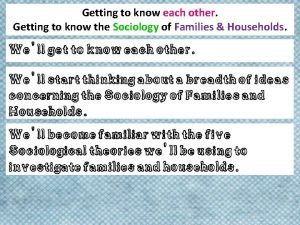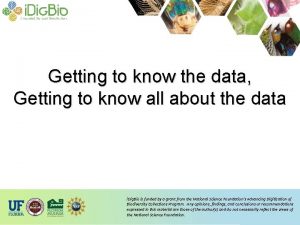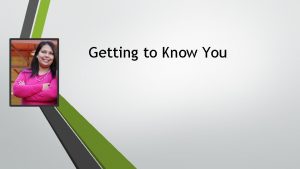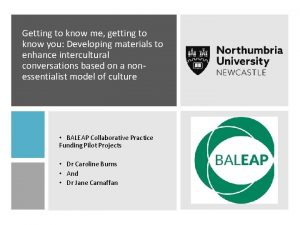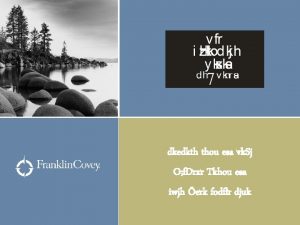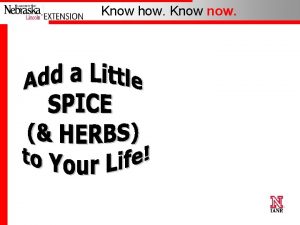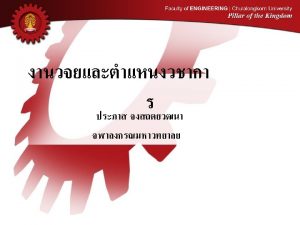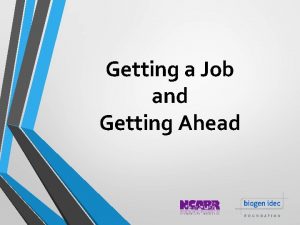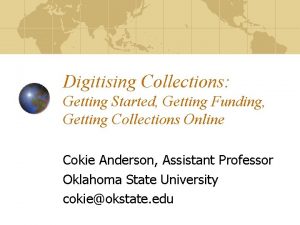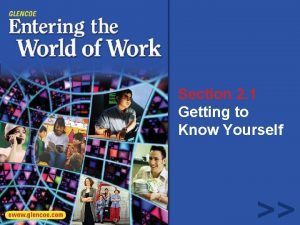Welcome to the NLPcourse Getting to know your

















































- Slides: 49

ﻣﺮﺣﺒﺎ Welcome! to the NLP-course “Getting to know your Unlimited Powers even better” Dar al Amal, Ramallah, Palestine one day Sunday 23 October 2016 Trainers: Sytse and Marlies Tjallingii

Getting to know each other 2 x 2 minutes, talk to each other, taking turns. Introduce the other

y g r Ene Good and New Joy In pairs, 2 minutes each. Focus at a recent situation which has given you a good/or new feeling. In which you felt energy, happiness or joy. Share in the whole group the title of your experience and show your feelings at your face.

Listening skills: One speaks……. the other listens only.

Open Frame Questions Experiences Short stories Share a real life-experience to reflect on what NLP can mean to it. Goal: apply NLP in your own reality. • •

Recognise the unlimited powers in your thoughts Obse Chang e them m e h t t ccep A r u o y r o h c An s t h g thou rve t hem e m a r f e R th. L em et the mg o r e w o p m E r u o y s t h g thou

The ‘incident’ You have already experience in NLP! And you are ambitious, because you want to do this second level course! Remember a recent situation in which you would have liked to communicate better. Do this individually blabla ? ?

Your Life areas Church/ mosque/ clubs family relations Friends Free time/ relaxatio work/ main activity hobby’s Health Food Mobility My perspective for the future Sleeping Spending money Sports/ fitness My energy

Food My energy Friends relations family hobby’s Sleeping Church/ mosque clubs Free time/ relaxation Sports/ fitness Your Life areas Health Mobility work/ main activity My perspective for the future Spending money In which area of your life are you fully satisfied? In which areas of your life you would like to have more satisfaction? Choose some areas and indicate how satisfied you are and how much you would like to improve them. 2 x 5 min. Work in pairs. Life area: Actual rate To improve/reduce: to which rate?

Which skills would you like to improve? determine your borders Keep friendships To show feelings convincing making new friends show selfconfidence Control myself better learn to relax stand for myself connect Speak in public Present myself better Have empathy Evaluate Choose 3 most important skills. In which life area are they most important? How much you can do already? How much you want to improve? Skill 1 learn to relax 2 3 Actual mark Most important for Life area: Free time 3 Mark you wish 8

The NLP communication model Exercise changing your internal representation

The toolkit of NLP: Neuro Linguistic Programming 1 Focusing Anchoring Positive language, Milton and Metamodel, hierarchy in language: chunking 2 Meaning giving Interpretation 3 Doing Reframing 4 steps learning proces motivating in 2 nd step Integrate presuppositions Respect Accept Neurological levels Mission building Changes on identity level The map is not the territory toolkit Sensory acuity Internal representation Building empowering beliefs Using your inner resources Submodalities

NLP techniques three life questions

Which NLP Models and Techniques can help you? Exercise: (page 9 English version) In pairs 2 x 5 minutes Which theme? Which NLP technique could help you with this theme? Select a few.

The Map is not the territory map Alfred Korzibsky territory

Dr Richard Bandler Who is who in NLP? Prof. Dr John Grinder

Resources, how do you use them? Presupposition 9: Everyone has all the resources s/he needs.

What is NLP? • Neuro(logical) = • Linguistic = • Programming =

From Judgement to Respect Release Judge negative Pay attention Respect Judge negative Look at it Accept Embrace Release Look at it Understand Accept Pay attention Respect Embrace

NLP Communication model Internal Representation State, emotions saptnateecrer/geynergy / e m i m t spaatcteer/e time/m age langu memories decisions rams metaprog values s f and belie attitudes Physiology Behaviour 20

Neurological levels Mission Identity Beliefs, Values Skills Behavior Environment






What do I focus on? One or two faces? Or a candle? One or two faces?



Discussion? Express opinions?

Reframing

3 Third Position Dissociated of yourself and from the other Three Perceptual Positions Also called: the meta position, the observer or helicopter view. 1 First Position Associated in your self 2 Second Position Associated in the other Professor Gregory Bateson

Change on identity level Just like me ……………. .

4 step learning: 1 unconscious incompetent 2 conscious competent 3 conscious competent 4 unconscious competent

Feelings in the 4 steps learning process f e e l i n g s 4 1 2 3 2 time

If what I do doesn’t give the desired result, then do something different If I always do what I always did, then I get what I always got.

Why going back to the observation? Creates more success to many different possibilities Possibility 1 Possibility 2 Possibility 3 Possibility 4 back to the observation From one judgment

Anchoring Anchor: Any stimulus that is associated with a specific response. The short way to your resources Resources: · MOTIVATION · HUMOUR / LAUGHING · ENERGY · LOVE · POWER · SELFCONFEDENCE

Chaining Anchoring Knuckels 1 2 3 4 1 = UPS 2 = IS 1 3 = IS 2 4 = DFS

To set an anchor Anchoring start intensity The keys to anchoring end feelings time The make anchors working properly, they have to meet four criteria. We call these the four keys to anchoring: The intensity of the experience - must be totally associated; see, hear, feel it as it was; The timing of the anchor (see graphic above); The unique properties of the stimulus (don’t take the inside of your hand, but take the touch of a knuckle or step in a circle); Repeating of the stimulus (the incentive must be able to be repeated).

Anchoring start end intensity feelings time The four steps to anchoring 1. Remember a vivid positive experience from the past with one valuable resource as: Motivation; humour / laughing; energy; love; power; self confidence. 2. Step in the circle of excellence at the highest point (see graphic below). Repeat this several times. Change your state (break state). 3 Repeat with the same or different resources with different memories. 4 Set the anchor in action to perform the test.

Disney strategy coach dreamer doer

Changing Submodalities Changing size, clearness, contrast


UPS = Undesired Present Situation DFS = Desired Future Situation

Swish pattern Step 1 Write a belief which you don’t want any more. UPS Step 5 New belief which you want. DSF

Totally conscious How are Values organized in our system? Attitudes Beliefs Values Core values Meta Programmes Totally unconscious

Sources of Values Family Health Friends Living environment Religion Economy Sport Media School Nature

Healing metaphors
 The secret to getting ahead is getting started
The secret to getting ahead is getting started Unit 1 getting to know my classmates
Unit 1 getting to know my classmates Getting to know someone questions
Getting to know someone questions Is tender breasts a sign of pregnancy
Is tender breasts a sign of pregnancy Know history know self
Know history know self Dilan gorur
Dilan gorur Nothing formed against me shall stand song
Nothing formed against me shall stand song 3.05 getting the most for your money
3.05 getting the most for your money Welcome welcome this is our christmas story
Welcome welcome this is our christmas story Give us your hungry your tired your poor
Give us your hungry your tired your poor Heavy rectangular knives used by butchers
Heavy rectangular knives used by butchers Cooking tools and equipment
Cooking tools and equipment Expand friendship
Expand friendship Know your rivals
Know your rivals One direction figurative language
One direction figurative language Happy and know it snapchat
Happy and know it snapchat Know your
Know your Know the hope of your calling
Know the hope of your calling Yesterday was her birthday
Yesterday was her birthday I am god's temple
I am god's temple Reciting a poem
Reciting a poem How to know your marriage is over
How to know your marriage is over The upper epiphysis unites with the shaft
The upper epiphysis unites with the shaft Bis don't let this happen to you
Bis don't let this happen to you Know your responsibilities
Know your responsibilities Hát kết hợp bộ gõ cơ thể
Hát kết hợp bộ gõ cơ thể Lp html
Lp html Bổ thể
Bổ thể Tỉ lệ cơ thể trẻ em
Tỉ lệ cơ thể trẻ em Gấu đi như thế nào
Gấu đi như thế nào Tư thế worm breton
Tư thế worm breton Bài hát chúa yêu trần thế alleluia
Bài hát chúa yêu trần thế alleluia Môn thể thao bắt đầu bằng từ đua
Môn thể thao bắt đầu bằng từ đua Thế nào là hệ số cao nhất
Thế nào là hệ số cao nhất Các châu lục và đại dương trên thế giới
Các châu lục và đại dương trên thế giới Công của trọng lực
Công của trọng lực Trời xanh đây là của chúng ta thể thơ
Trời xanh đây là của chúng ta thể thơ Mật thư tọa độ 5x5
Mật thư tọa độ 5x5 Làm thế nào để 102-1=99
Làm thế nào để 102-1=99 Phản ứng thế ankan
Phản ứng thế ankan Các châu lục và đại dương trên thế giới
Các châu lục và đại dương trên thế giới Thơ thất ngôn tứ tuyệt đường luật
Thơ thất ngôn tứ tuyệt đường luật Quá trình desamine hóa có thể tạo ra
Quá trình desamine hóa có thể tạo ra Một số thể thơ truyền thống
Một số thể thơ truyền thống Bàn tay mà dây bẩn
Bàn tay mà dây bẩn Vẽ hình chiếu vuông góc của vật thể sau
Vẽ hình chiếu vuông góc của vật thể sau Thế nào là sự mỏi cơ
Thế nào là sự mỏi cơ đặc điểm cơ thể của người tối cổ
đặc điểm cơ thể của người tối cổ Ví dụ về giọng cùng tên
Ví dụ về giọng cùng tên Vẽ hình chiếu đứng bằng cạnh của vật thể
Vẽ hình chiếu đứng bằng cạnh của vật thể

